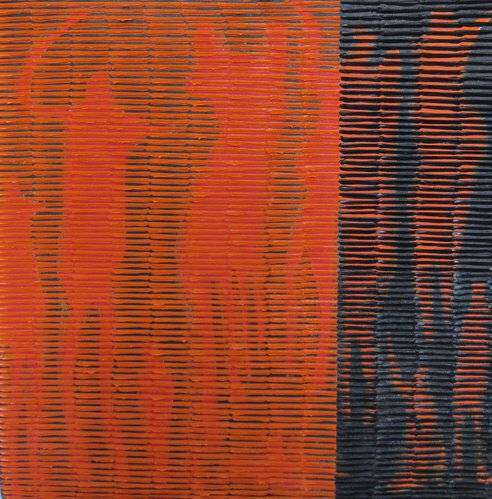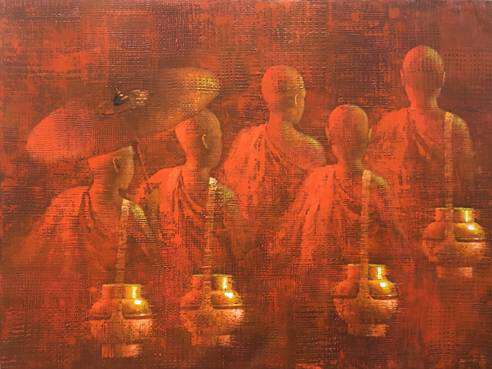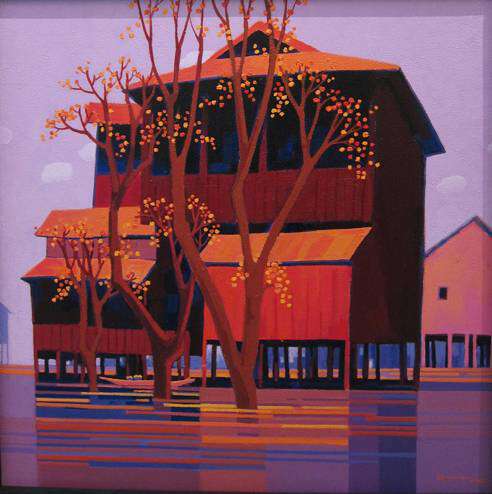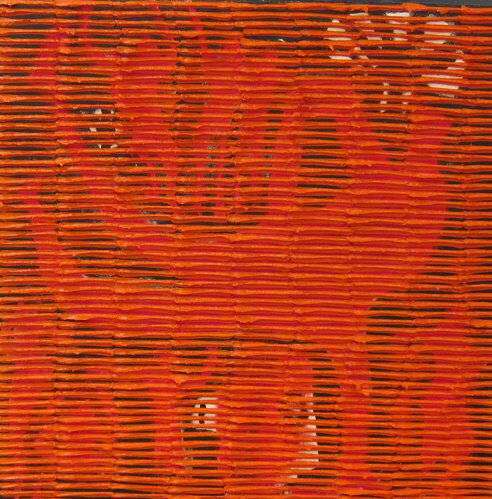The Flow of Contemporary Art in Myanmar
In recent years, as Art Basel Hong Kong has established an "Insight Section" to introduce art scenes in Asia and the Asia-Pacific region, attention has been focused on the elucidation and presence of indigenous scenes unique to Asia, different from those in the West.
Paradoxically or ironically, one cannot ignore Myanmar's indigenous culture and its social history in order to look at its art scene, especially the contemporary art scene that is distinct from the local ethnic paintings and folk art.
After gaining independence from the British colonial rule in 1948, Myanmar established a scheme of democracy and cultural education, although it was unstable, but on the other hand, the instability of the political base due to ethnic minority issues and internal political conflicts led to the coup d'etat in 1962, and the resulting military rule continued for a long time until the democracy movement in 1988. The military rule continued for a long period of time until the democratization movement in 1988.
The restrictions on art activities under the military regime had a negative impact on the recognition and citizenship of art in the country, but with the democratization movement, a contemporary art movement was born in 1979.
Founded by about 20 students who were engaged in independent art research at what is now the University of Yangon, "Gango Village" was the first contemporary art movement to develop in Myanmar, and at the time, it was nurtured mainly through its own interpretation of Western abstract expressionism. It was also the first movement to establish a connection with the Western art scene.
However, the art community was not treated well in Myanmar, where the influence of the military regime has not disappeared, and while it continued to grow unsuccessfully, in the 1990s, a trend centered on students sought to present and work outside of the university, leading to the establishment of "Modern Art 90" in 1990 and "New Zero Art Group" in 2000. This led to the formation of the "New Zero Art Group" in 1990 and 2000, supporting the production of artists with a global stage.
Myanmar's art scene goes global - River gallery's attempt
River Gallery, now in its 14th year, is a contemporary art gallery that has been expanding its activities in the international arena as its main field.
With more than 40 artists participating, River has been experimenting with how to get artists accepted by international collectors and the global scene since the days of censorship.
The artists are able to retain elements that can withstand the Western context, while at the same time, they are able to present works that prove that they are Myanmar art, with indigenousness, timelessness, and the historical background of the country. In this sense, it has the power to reveal much of the black box of the Asian art scene and history.
For example, Dawei Tu Tu (1972-), the painter behind the "Monk's Memory" series, says, "I wanted to hint at Buddhism as a way of life in Myanmar and the existence of monks. As he says, "I wanted to hint at Buddhism as a background of life in Myanmar, and the existence of monks," Dawei Tu Tu (1972-) takes a bird's eye view of the Buddhist way of perceiving things and existence, which is widely supported in Myanmar.
 Memory of monks (2) -
Memory of monks (2) -
202092cm x 122cm
Click here for details
On the other hand, Thar Gyi (1966-), who brings a new angle to the abstraction of Myanmar's painting history, describes his work as "non-painting". Inspired by the rural landscape he saw during a visit to a temple town in Myanmar, he adds a "ridged" figuration to the internal rhythmic expression that has been used in domestic painting, thereby achieving a unique positioning in the history of art and abstraction in Myanmar, but without directness.
 Vague Memory (7
Vague Memory (7
)92cm x 92cm
For more information about the work, click here.
TRiCERA is pleased to present 49 paintings from River Gallery, a gallery that supports artists whose work seems to be a singular point between Myanmar's domestic art scene and the Western art scene. We hope you will enjoy the history of Myanmar art, which is both ethnic and universal.
Dawei Tu Tu (1972-)
Dawei Tu Tu, born in Myanmar, has participated in exhibitions in Myanmar since 1997 and has been active outside of Myanmar, including in England and Singapore. He has been awarded the Best Painting of the Year at the Myanmar Asian Art Awards for three consecutive years since 2007, and his recent work, entitled "Memories of a Monk," uses a very limited range of colors and distinct contrasts of light and dark to suggest "the background of spiritual life in Myanmar. background of spiritual life in Myanmar.
 Memory of monks (3) -
Memory of monks (3) -
202092cm x 122cm
 Memory of monks (4) -
Memory of monks (4) -
202092cm x 76cm
For more information about the works, click here.
Kyaw Lin (1975-)
Working in a wide range of locations including Australia, Paris and Hong Kong, Lin is known for her flat, intoned blocks of color structured around the landscape of Myanmar. However, she avoids making explicit the material object as in landscape painting, and instead expresses the emotions and subtleties of nature in everyday life, encouraging viewers to discover them.
 Myanmar Landscape (5)-
Myanmar Landscape (5)-
202061cm x 61cm
 Yellow
Yellow
Field90cm x 90cm
Click here for details
Thar Gyi (1966-)
Thar Gyi, whose keyword is "non-painting," brings a new angle to the history of domestic abstract painting by incorporating the ridged formative qualities found in Myanmar's rural landscape into his paintings. In a gestural reference to the development of painting in Myanmar, he achieves the essence of the visual arts and pictorial academia at once.
 Vague Memory (2
Vague Memory (2
)61cm x 61cm
 Meditation (1
Meditation (1
)122cm x 122cm
For more information about the works, click here.